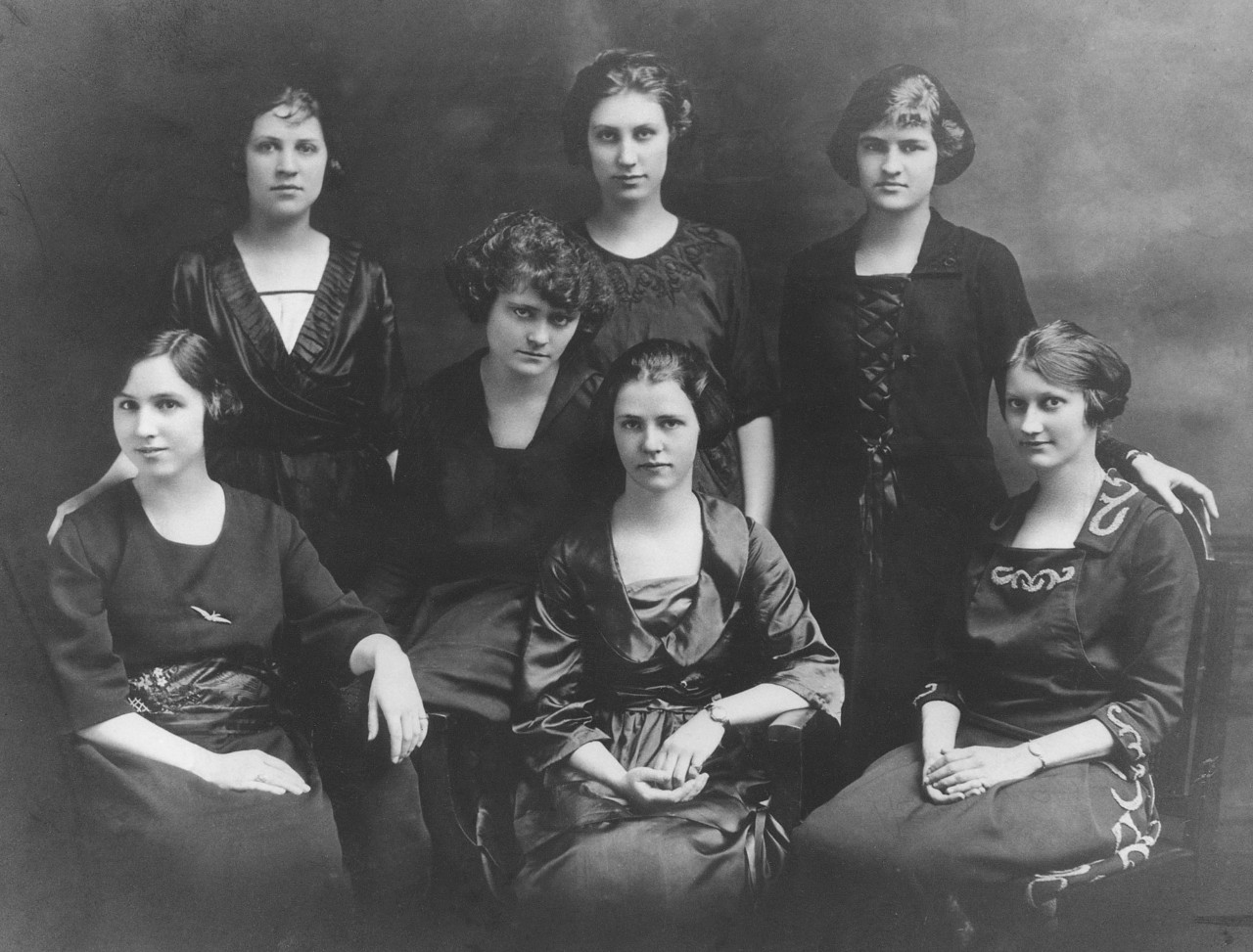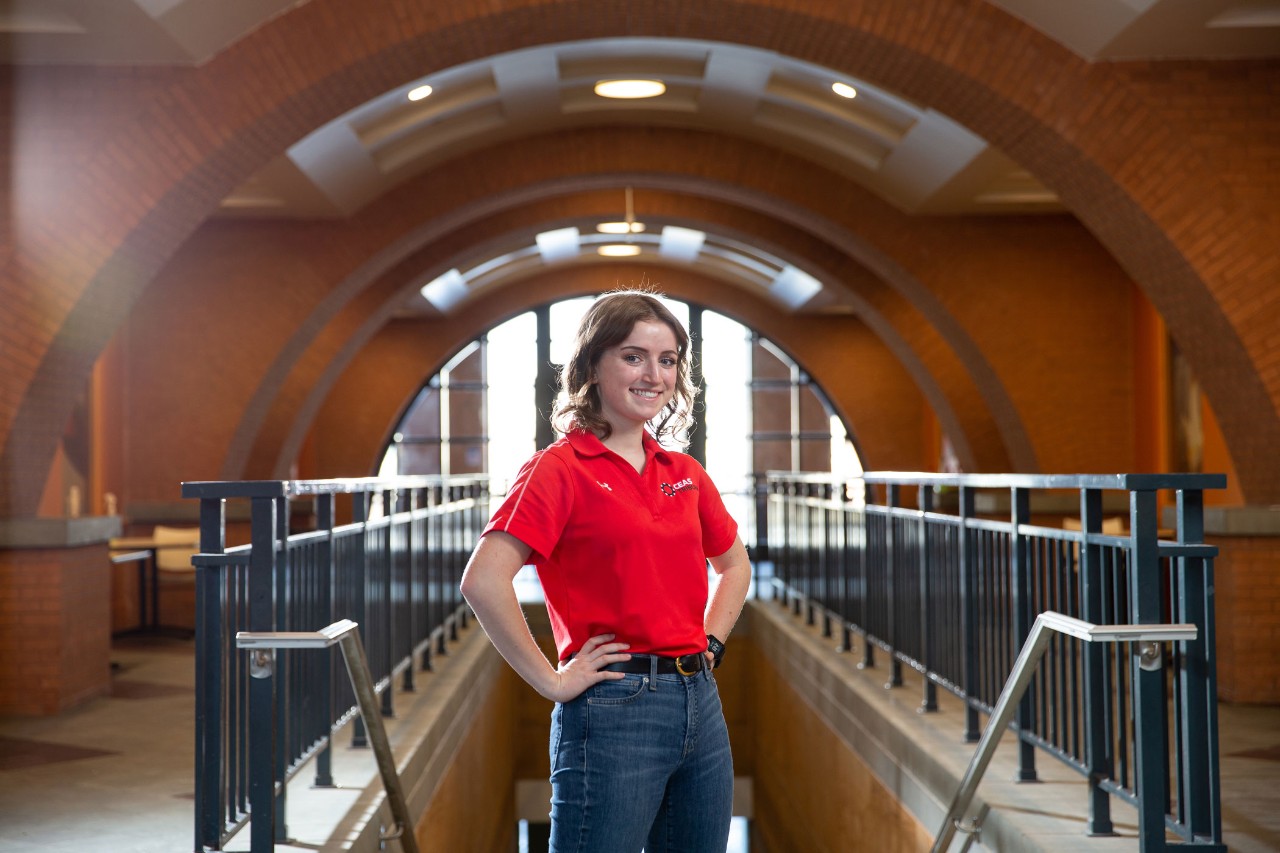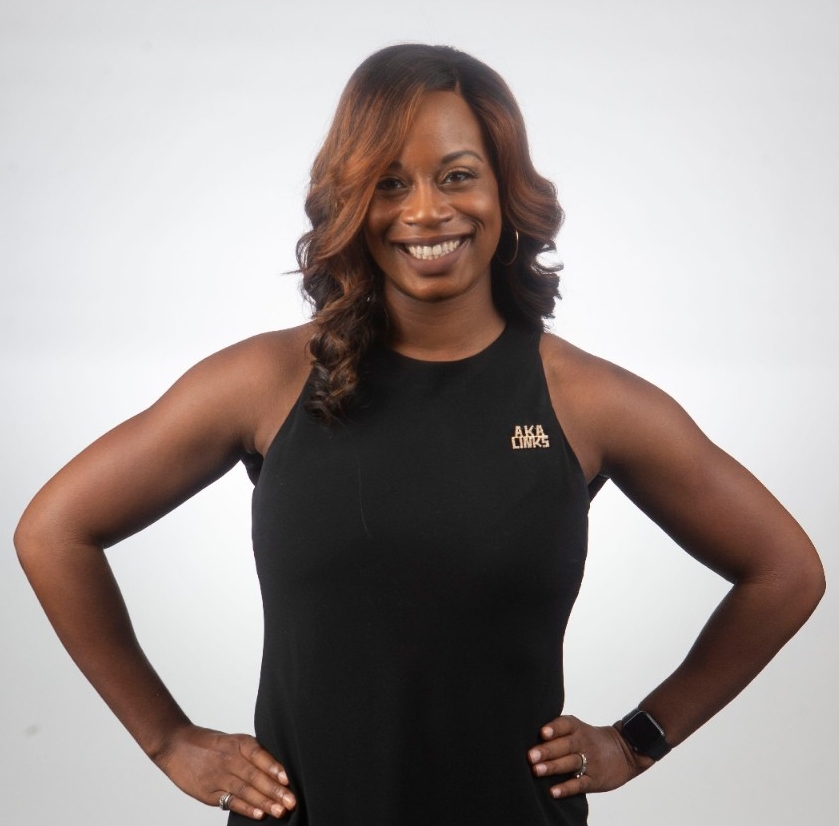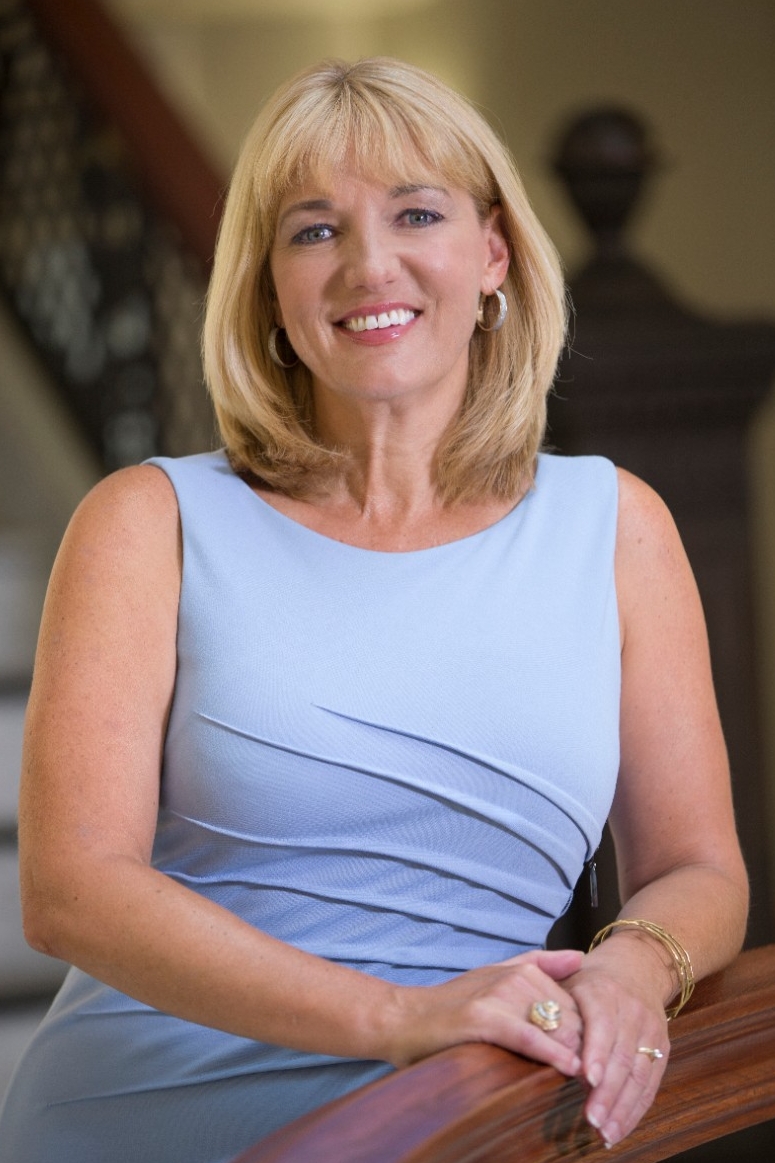UC celebrates being the first to admit women in engineering and cooperative education 100 years ago
or the University of Cincinnati, this academic year marks the centennial of a milestone that rewrote the history of education. It was 100 years ago, in 1920, that UC became the first university in the country to admit women into the co-op program.
When UC introduced cooperative education to the world in 1906, the opportunity to take part was limited to engineering students. That’s only natural; its creator, Herman Schneider, became the dean of the newly formed UC College of Engineering that same year and later would serve as the president of the university.
Initially, co-op was open only to engineering students and, therefore, only to men. In 1920, UC increased its range of co-op disciplines, opened opportunities to more students and broke with tradition by becoming the first university in the country to admit women into preparatory programs for engineering. The seven young women who enrolled in chemical and commercial (business) engineering that fall also became the first to take part in cooperative education.

These seven UC students made up the first class of women co-ops. Seated, from left: Kathryn Gillis, Margaret Maynard, Helen Norris and Myrtle Hay. Standing, from left: Ruby Schoen, Charlotte Atherton and Ruth McFarlan. Photo/UC Archives
Against all odds
For these first women of co-op — often dismissed as “co-eps,” or worse, “co-eppettes” — paving a new path led to many dead ends.
Most employers refused to hire women co-op students, and those that did expected the women to fit a certain mold. They were paid less than their male counterparts, and duties such as answering the phone, filing documents and even washing dishes fell to them, according to “The Ivory Tower and the Smokestack: 100 Years of Cooperative Education at the University of Cincinnati” by M.B. Reilly.
“We like the feeling of being pioneers,” recalled 1921 chemical engineering co-op Mary Blood. “It would be somewhat nicer if there were more of us, but then, it seems that the enthusiasm makes up for the present lack of numbers.”
It’s no wonder that when the first class of four UC women co-ops graduated in 1925, one of the men in their class was won over by their tenacity, as he observed: “Courage is the chief virtue of the comparatively unknown co-ep. They certainly have earned [their degrees] after their long struggle against many handicaps, not the least of which was public opinion.”


Women from UC saw more opportunities in co-op and the workforce during World War II. Photos/UC Archives
A legacy of leadership
It was such struggles that slowly forced a widening path for others to follow. Indeed, 1920 co-op pioneer Helen Norris Moore went on to pursue graduate studies at UC and eventually taught at the university. Early commercial engineering co-op Wanda Mosbacker, who attended UC in the early 1930s and graduated almost a decade after Moore, went on to lead UC’s entire co-op program from 1969-75.
World War II had a dramatic impact on UC's co-op program. In 1943, the university opened up all engineering programs to women in order to meet pressing industry demands brought about by World War II.
As employers of all stripes finally began hiring women co-ops and graduates in greater numbers, UC women stormed the workforce. “We’d previously been prepared to be secretaries,” recalled 1942 business co-op graduate Florence Endebrock Schroeder, “[but] I was [soon] tracking the company’s financial operations, keeping stats, making financial forecasts, projecting sales and measuring cash flow. We were the ones telling the company when they needed to go to the bank to borrow more money.”
Throughout the decades since, women co-ops in engineering, business and design have steadily advanced in the spirit of the first women co-ops.


Women at UC continued to blaze new trails into the 21st century. Photos/UC Archives
In the 1990s, civil engineering student Sarah Gray became the first UC co-op placed with a firm in the former East Germany after the fall of the Berlin Wall. She worked for a structural engineering/architectural firm helping in the reconstruction of the Frauenkirche, a church building that was a famous casualty of the 1945 firebombing of Dresden.
Aerospace student Jeannette Dehmer’s California co-op was a dream come true: She checked up on Albert Einstein’s work by contributing to a historic space mission. In 2004, Dehmer remained on co-op for an entire academic year to help prepare and test a satellite known as Gravity Probe B for launch, a project 40 years in the making, so scientists could measure how space and time are warped by the Earth’s presence.
The next generation
"Many students and professional women cannot imagine the barriers women had to overcome simply to practice their chosen profession,” says Gisela Escoe, UC's dean of Experience-Based Learning and Career Education. “Unfortunately, there is still work to be done.” She adds that according to the Bureau of Labor Statistics’ 2019 Current Population Survey, only about 15% of all engineering and architecture jobs are held by women.
Those stats aren’t stopping students like Bailey Freeland from pursuing male-dominated fields. The second-year chemical engineering student recently completed her first co-op at pharmaceutical giant AstraZeneca, where she worked with the bulk manufacturing technical team. She helped develop a process standard that ensured technicians’ safety, saving 100 production hours per year, which was successfully implemented by the company.

Bailey Freeland stands in the Engineering Research Center. Photo/Andrew Higley/UC Creative + Brand
Freeland acknowledges the pioneers who paved the way for students like her.
“To study engineering is a challenge within itself, but pursuing it in the face of discrimination requires true grit and perseverance to succeed,” she says. “It is an honor to study in Baldwin Hall, where those first seven women blazed the trail for students like me and women around the globe. It's a daily reminder of how far women have come, and I'm honored to be a part of the movement that the University of Cincinnati continues to lead.”
Tackling today’s inclusion challenges
UC continues to seek to overturn obstacles within education, according to Whitney Gaskins, College of Engineering and Applied Science (CEAS) assistant dean of inclusive excellence and community engagement.
“When we research why women aren’t choosing engineering, we find that a lot of women want to be in a career that helps people,” says Gaskins, adding that the college and university must help reframe perceptions about the field.

Whitney Gaskins | Photo/Joseph Fuqua II/UC Creative + Brand
“At its core, engineering is all about helping people. The whole goal is to make everyone’s lives easier, more convenient, and there are so many areas you can do that work. We fix problems and make the world a better place.”
That’s why Gaskins and her colleagues in CEAS have made K-12 outreach a priority. In her role as assistant dean, Gaskins has revamped the college’s summer bridge program to increase student support and retention, as well as developed and strengthened partnerships with local area school districts. The college holds summer camps for women in engineering and applied sciences, as well as for women of color, and the college’s Women in Engineering organization holds regular programming to provide support for current students.
“I’m thankful that we work at a university that believes so strongly in providing opportunities for women, and we’re continuing to pave the way,” Gaskins says.
Gaskins credits cooperative education for getting employers to see that women engineers are just as capable as men.
“For so long, people thought women couldn’t do the work for a wide variety of reasons,” says Gaskins. “It could have been intelligence, it could have been strength, it could have been skill knowledge — co-op actually helps demystify those things.”
Expanding co-op's reach
Cooperative education is no longer limited to the engineering fields at UC; it’s required to earn an undergraduate degree from the College of Design, Architecture, Art, and Planning, where women make up 69% of the student population. Co-op is also integrated in UC’s Carl H. Lindner College of Business, the communications programming in the College of Arts and Sciences and in the information technology program in the College of Education, Criminal Justice, and Human Services.

Gisela Escoe | Photo/Lisa Ventre/UC Creative + Brand
UC students earn a collective $75 million annually working in about 6,000 co-op placements for 1,800 national and international employers, including Apple, Disney, Duke Energy, Fisher Price, General Electric, HBO, NASA, Tesla, Toyota and many more.
UC’s equity and inclusion efforts include initiatives to ensure women students have successful experiences on campus and during co-op placement. The Division of Experience-Based Learning and Career Education offers resources and training for employers to ensure safe and effective learning experiences for all students, as well as on-campus training to increase the odds that bystanders will intervene when they witness discrimination and harassment.
“UC remains a champion for gender equity in engineering and STEM," says Escoe.
As the global founder of cooperative education that houses a Top-5 co-op program nationally, UC continues to advance the march toward progress.
Next lives here
A core pathway of UC's innovation agenda is Co-op 2.0, a re-envisioning of all aspects of experience-based learning. Opportunities to gain professional experience are a key component of the university's strategic direction, and are being created and made available to all Bearcats, regardless of major.
Featured image at top: One of the first women co-ops at UC in the 1920s | Photo/UC Archives
Current student Bailey Freeland | Photo/Andrew Higley/UC Creative + Brand
Digital design/Kerry Overstake and Margaret Weiner
Additional Contacts
Matt Koesters | Public Information Officer | Media Relations + Content
matthew.koesters@uc.edu | 513-556-5279
M.B. Reilly | Executive Director, PR | Marketing + Communications
reillymb@ucmail.uc.edu | (513) 556-1824
Related Stories
UC's CECH recognizes students, faculty and staff for outstanding...
April 24, 2025
In the early weeks of April 2025, UC's College of Education, Criminal Justice, Human Services, and Information Technology recognized and celebrated students, faculty and staff achievements annual Outstanding Student Awards and All College Awards ceremony, the latter of which awarded both Faculty and Staff Awards and the college's Golden Apple Awards.
Why can perimenopause make migraines worse?
April 23, 2025
Experts say women who have migraine symptoms linked to their menstrual cycle are prone to migraine problems during perimenopause.
CCM welcomes Tyler Ehrlich as Assistant Director of Wind Studies
April 23, 2025
UC College-Conservatory of Music Dean Pete Jutras has announced the appointment of Tyler Ehrlich, DMA, as CCM's new Assistant Professor and Assistant Director of Wind Studies. In this role, which begins on Aug. 15, Ehrlich will conduct the CCM Wind Ensemble, oversee CCM’s doctoral cognate in wind conducting and teach conducting, literature and music education courses.
DAAPFASH25: See Class of 2025 fashion creations May 2
Event: May 2, 2025 7:30 PM
As part of the College of Design, Architecture, Art, and Planning's annual DAAPworks showcase, the iconic DAAP Fashion Show will celebrate its 72nd live runway show back in the MegaCorp Pavillion on the evening of Friday, May 2, 2025 at 7:30 pm!
UC study finds vision loss fear may keep some from having...
April 23, 2025
A new University of Cincinnati study finds vision loss fears may deter some patients from cataract surgery, despite it being the only effective treatment. The research underscores the role of doctor-patient relationships in medical decisions.
Launching lives: UC Clermont manufacturing program to offer paid...
April 23, 2025
The University of Cincinnati Clermont College’s Manufacturing Engineering Technology program will soon prepare students for the real world more than ever — through a new cooperative education requirement for those entering the program in fall 2025.
